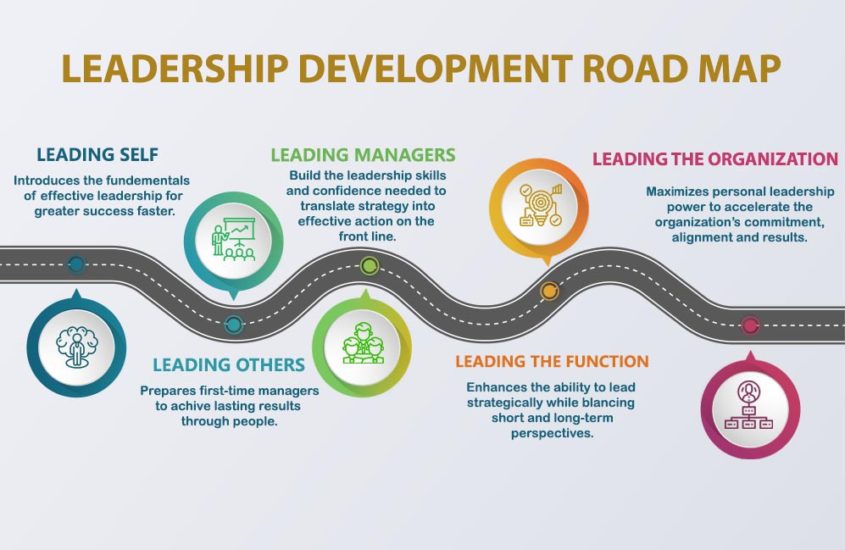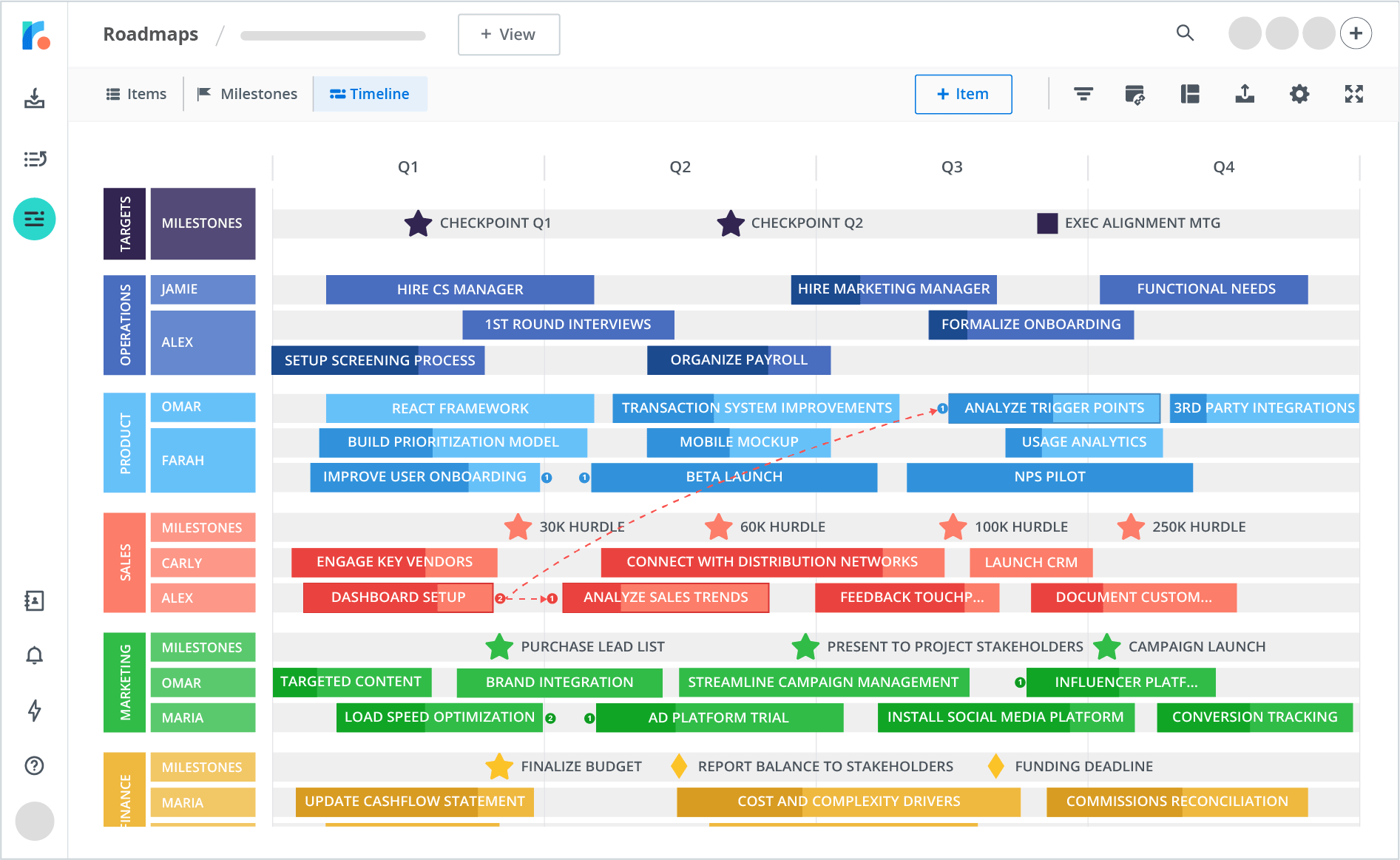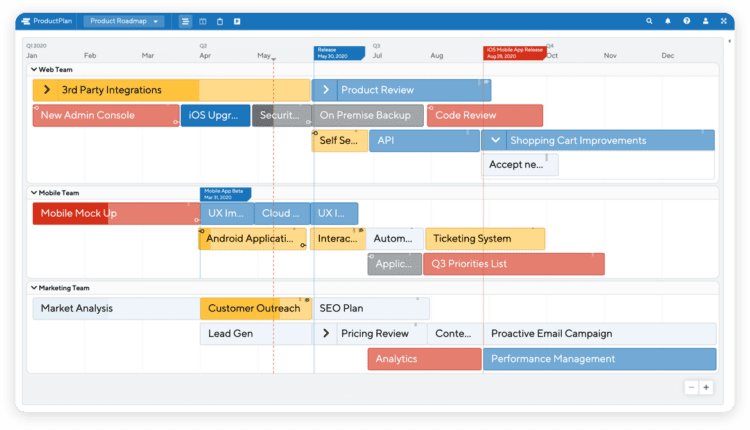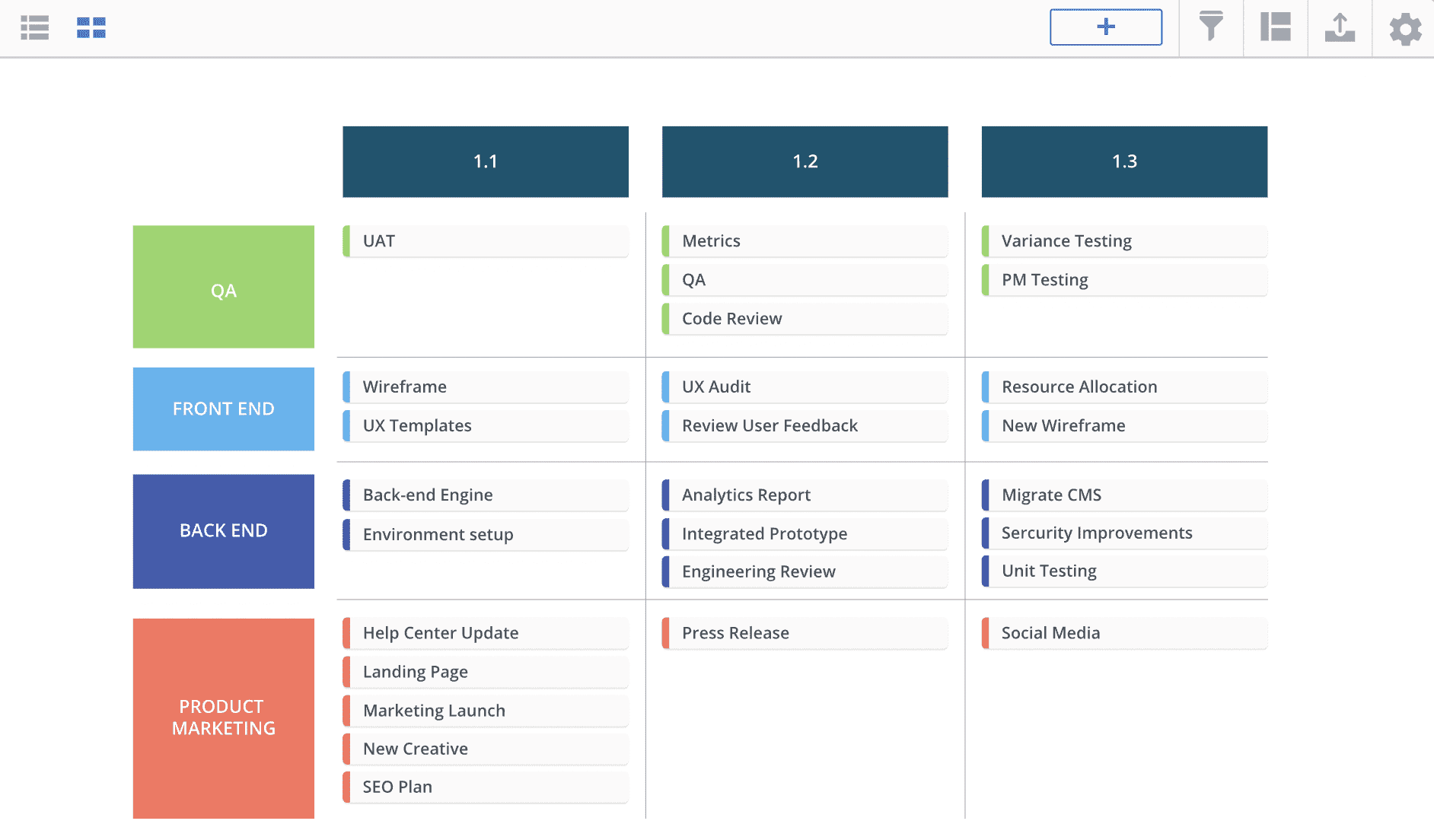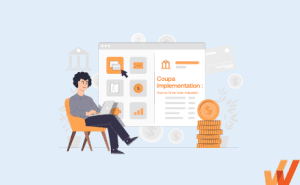7 Examples of Effective Product Roadmaps in 2024
- Published:
- Updated: November 15, 2023

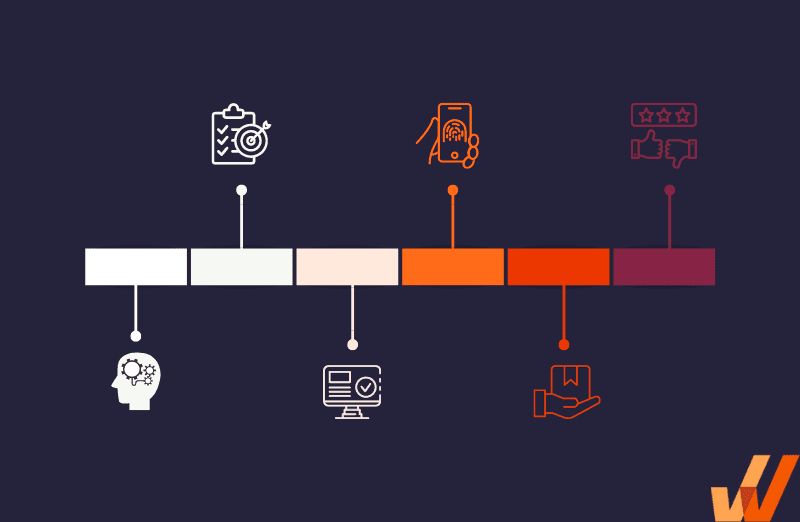
A product roadmap is a high-level summary of how your product will evolve, including the functionality you plan to build, the challenges you expect those features to solve, and the long-term business goals your product should help you achieve.
To help us understand better, let’s consider a hypothetical SaaS company that makes payment APIs for ecommerce websites. Suppose this commpany wants to launch a new dunning feature to help customers capture failed payments. In that case, their product roadmap will include items such as:
- Functionality: Launch a new dunning feature that automatically retries failed payments
- Challenges: Help customers win back 70% – 90% of failed payments
- Metrics or Big picture goals: Grow our revenue by 10% this year, by charging 3.5% of each successfully recovered transaction
- Timeline: Ship our dunning feature over the next six months
A roadmap covers the functionality a product team wants to launch, their business goals, the timeline, and the problem the feature is supposed to solve for their users.
Essentially, it serves as a source of truth where everyone working on the product—engineering, marketing, growth, and design—can build consensus, share ideas, and ensure products and features are launched on time and within budget.
What are the best product roadmap examples for 2024?
- Software product roadmaps
- Release plans
- Sprint planning roadmaps
- Feature timeline roadmaps
- Objectives timeline roadmap
- Kanban roadmaps
- Now-next-later roadmaps
Types of Roadmaps
There are four main types of roadmaps used by product teams to coordinate the development process. The main differences between them are the audiences they’re built for, how they’re used in the product management process, and what they contain.
1. Customer-focused roadmaps
Customer-focused roadmaps help you share your product vision with customers, get customer feedback, and keep them posted during the product development process. This way, your users can:
- Request specific features
- Vote for items under development
- Leave comments on open tickets
- Sign up to beta test a feature before it’s released
For instance, Front has a public roadmap where users can track previous releases, observe features that are under development, and vote for features to be prioritized based on how essential they are to them.
Github’s product roadmap (built in Github) is split into quarterly sprints that show previous launches, upcoming features, and how far into the development process the team is. Buffer hosts their public roadmap on Trello, where users can follow their past, ongoing, and future releases, leave comments, upvote features, and track projects as they navigate from to-do (i.e., exploring) to done.
TIP: If you’re having a hard time choosing, we created a roundup of the best product roadmap tools for teams that want a single source of truth for all their product development communication.
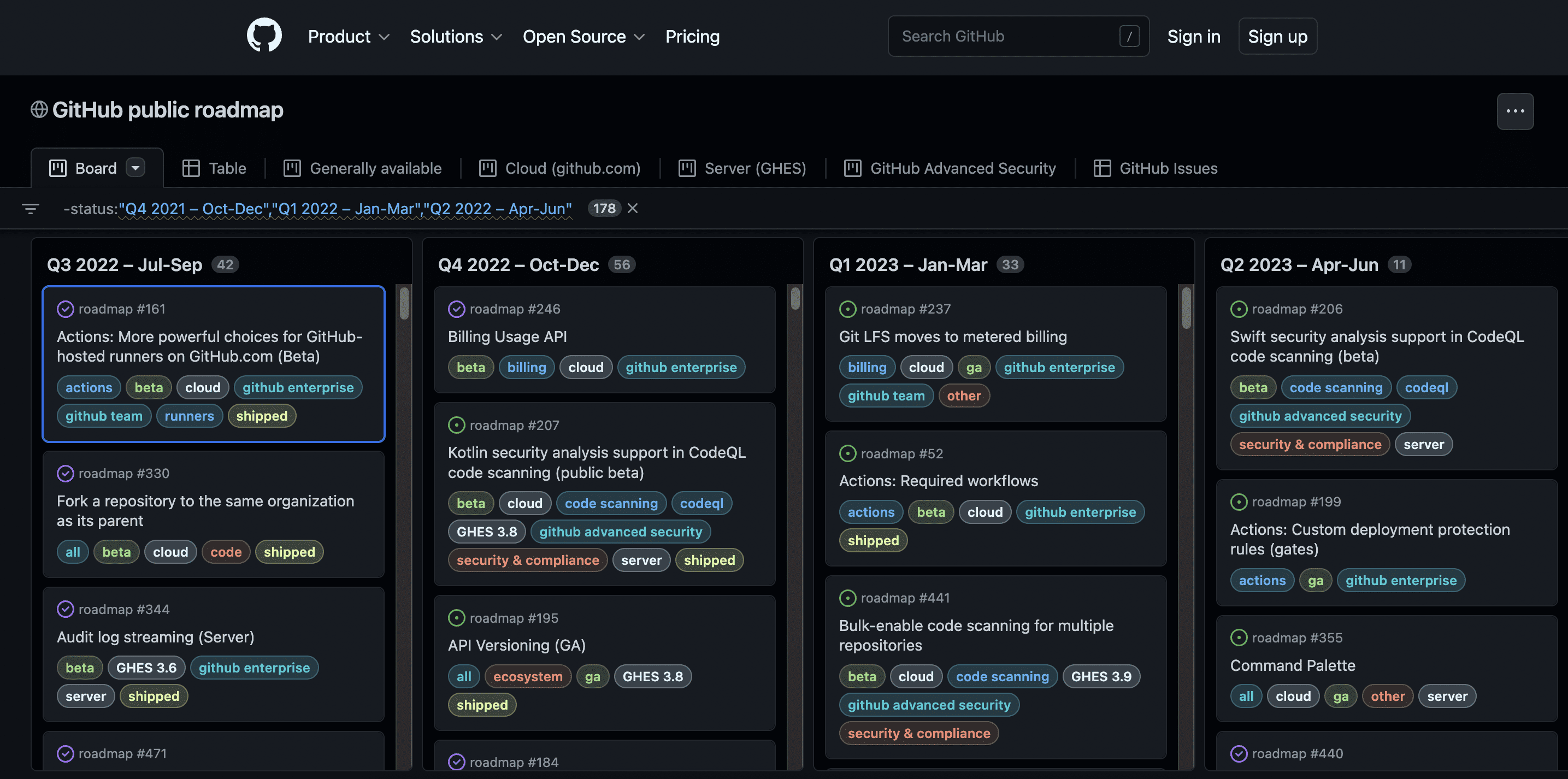
2. Delivery-focused roadmaps
Like the name implies, delivery-focused roadmaps help you track features as they progress from planned to delivered. They’re focused almost exclusively on launching new functionality and keeping stakeholders (i.e., investors, C-Suite, etc.) in the loop.
To help us understand better, it might be helpful to compare a delivery-focused roadmap with other types, like a customer-focused roadmap. The basic goal of a customer-focused roadmap is to help a product team communicate with their users and get them involved in the development process, while a delivery-focused roadmap serves like a high-level to-do list where a product team checks off action items and tracks features from to-do to done.
3. Leadership roadmaps
Leadership roadmaps help product managers update a company’s senior leadership that may not be directly involved in the development process on how a product is evolving, any challenges they’re facing, and any detours they’ve had to make.
4. Business roadmaps
A company (i.e., business) roadmap serves as a general blueprint that shows a product team’s vision, the goals they want to achieve, and a basic rundown of the tactics they intend to use to get there. Company roadmaps contain a lot of aspirational goals and are generally low on technical details.
7 Examples of Effective Product Roadmaps
Here are seven examples of product roadmaps in 2024:
1. Software product roadmaps
A software product roadmap is a blanket term for any high-level document a software product team uses to plan their development efforts, decide which features to build, track releases, and cooperate on product development. It is essentially an umbrella term for all kinds of product roadmaps, including release plans, sprint plans, etc.
2. Release plans
A release plan is a blueprint where a product team documents and tracks the features they plan to launch in an upcoming product release cycle, which usually lasts a quarter. A release plan typically includes:
- The features the product team plans to launch
- A user story that explains how the feature works from the users’ perspective
- Action items and tasks (ranked in order of priority) to be completed for the feature(s) under development to be shipped successfully
- The product team’s (estimated) velocity, i.e., how long it takes them to complete a task on average, and
- The goals that need to be completed for that release cycle to be successful
Compared to a product roadmap, a release plan is more of a short-term (usually quarterly) planner, while the latter serves as the nerve center where all the planning for the product development process happens on a long-term basis (usually 12 months or longer).
3. Sprint planning roadmaps
A sprint planning roadmap is typically used by product teams that work with the agile methodology. It focuses on planning the features a team intends to deliver during future sprints, assigns each action item to a team member, and serves as a source of truth for agile product management teams.
A sprint planning roadmap usually includes:
- The goals the product team plans to achieve, usually a product release, an update, a bug fix, or a patch and the strategy the team plans to deliver those goals with
- A breakdown of the aforementioned goals into smaller tasks and action items
- User stories that define the product or features you intend to build from your ideal user persona’s perspective
- A product release plan
- An open feedback mechanism for users and stakeholders to leave comments
Product roadmaps are generally regarded as living documents that evolve with the product, while sprint plans are designed to be purely aspirational since they focus on creating a product vision.
4. Feature timeline roadmaps
A feature timeline roadmap uses a Gantt chart to help product teams track work-in-progress against a timeline. It helps you assign a timeline to your action items and visualize the feature(s) you’re working on against how long you’ve spent on it and how much time is left.

For example, let’s say a SaaS product team is working on a usage-based pricing feature for their product.
They want to be able to charge customers on a per-unit basis, and they want to build it in-house. So, the product team targets to launch the product within three months. In the planning phase, they create many sub-tasks under the usage-based billing goal and assign three months as the timeline for the product’s completion.
Here’s how a feature timeline roadmap will help them: it essentially serves as a clock that adjusts the action item (i.e., launch usage-based billing) against a timeline that shows how much work has been completed (and is still undone) vs. the timeline for the project (i.e., three months).
5. Objectives timeline roadmap
Similar to a feature timeline roadmap, an objectives timeline roadmap tracks the completion of a target against the time window allotted to it to help the product team determine if they need to ship faster or extend their timeline.
While a feature timeline roadmap tracks the delivery of specific product features, an objective timeline roadmap tracks the progress of a company’s big-picture goals and the reasons why the company is building those features in the first place. For instance, an FT roadmap may track items such as launch usage-based pricing and support single sign-on via Facebook and Google, while an objective timeline roadmap tracks the completion of strategic goals such as:
- Growing ARR 30% this year
- Increasing mobile app retention rates by 10%
- Growing our number of DAUs by 50%, etc.
6. Kanban roadmaps
A Kanban roadmap is used to group goals and initiatives into buckets, based on a team’s sentiment towards it at the moment—i.e., whether it’s just an idea they might explore, whether it’s being worked on, or has been completed.

Typically, a Kanban planning board includes (four) columns where users can assign tasks based on their current status, such as:
- Backlog—includes ideas the team thinks are interesting but haven’t committed to working on them, either because they don’t have the resources, approval from leadership or because the specifics haven’t been clarified
- To-do—includes items that the product team has decided should be built but hasn’t commenced working on
- Doing—includes tasks that are being executed
- Done—where tasks are moved once they’re completed
The card for each priority on a Kanban board includes details such as the item’s description, nature of the task, sub-tasks, due dates, the stakeholder or team member it’s assigned to, etc.
7. Now-next-later roadmaps
A now-next-later roadmap organizes a product team’s targets into three brackets, from immediate to long-term, starting with the most important priorities that should be worked on. It’s similar to a Kanban board with a few key differences.

First, action items on a Kanban board move from left to right (i.e., Backlog → To-do → Doing → Done) while tasks on Now-Next-Later roadmaps move from right to left (i.e., Later → Next → Now).
Secondly, while the NNL roadmap focuses on outcomes (i.e., how tasks add up to bigger goals), a Kanban roadmap exists just for productivity’s sake. It’s designed to get tasks completed quickly and is not concerned with how it ties into big-picture business goals.

The most significant benefit of a product roadmap is the feedback —it helps you understand how users engage with your product, the features they want, and what functionality to keep as-is.
But, user comments on your public roadmap can only give you so much insight; if you want to build a truly user-centric product, you need to be able to:
- See for yourself how users engage with your product
- Create self-help resources that help users resolve issues quickly
- Keep improving your product’s UI to offer an effective user experience
Whatfix is a digital adoption platform (DAP) that helps product teams understand how users interact with their applications and reduce churn with on-demand support. Among others, Whatfix will help you:
- Show users how your product works with step-by-step walkthroughs
- Automatically translate product docs, FAQs, and notifications into 70+ languages
- Track which of your content users engage with the most so that you can double down on it
- Collect in-depth feedback with NPS surveys that can target specific buckets of users based on their device type, engagement levels, sign-up date, account information, and
- Nudge users to try out new features with unintrusive pop-ups and alerts
Whatfix also enables product teams with a no-code analytics platform to analyze user behavior, map user journeys, identify friction areas, and test new flows.
Whatfix is designed to help product teams build better products by learning what users want using analytics and making it easy for users to immerse themselves into your product with guided onboarding.
Thank you for subscribing!

